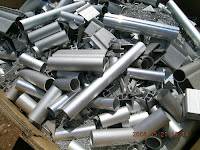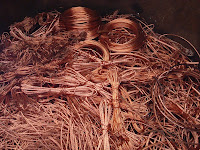0
How To Estimate How Much Your Scrap Metal Is Worth
 |
| Scrap Aluminium |
To begin with, you will need to ensure that you have separated your scrap into its relevant types. The reason for this is that each metal will have a different worth, and it is easier to work out how much you will make if you do each type separately.
 |
| Scrap Copper |
You could also try visiting your local recycling centre or doing some research online to see what other people are currently paying for scrap. You might be able to get your hands on a scrap metal pricing chart, which could be invaluable for determining the best times to sell.
At the end of the day, the worth of your scrap metal will differ depending on the time of year, month and even week that you are trying to sell it. Once you have been buying and selling for a while, however, you will begin to become familiar with the trends in pricing, as well as developing an instinct for when you should sell and when you should hold onto your metal for a little longer.




